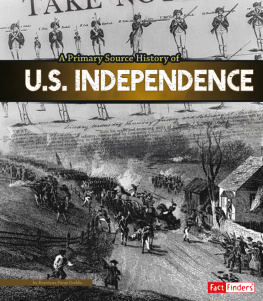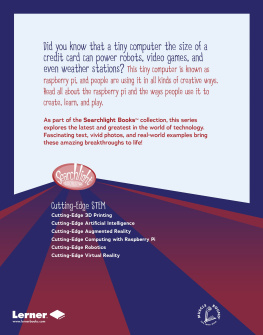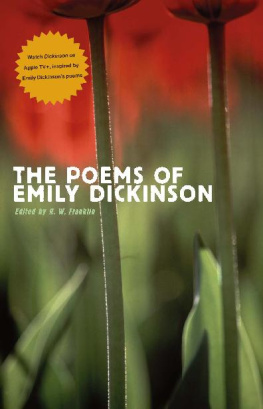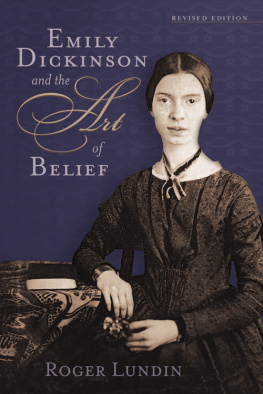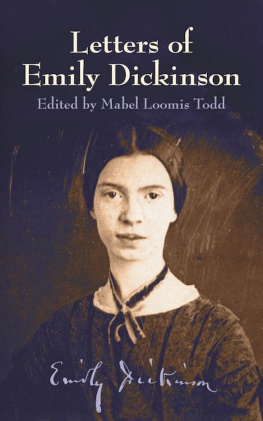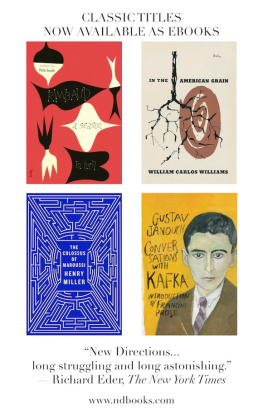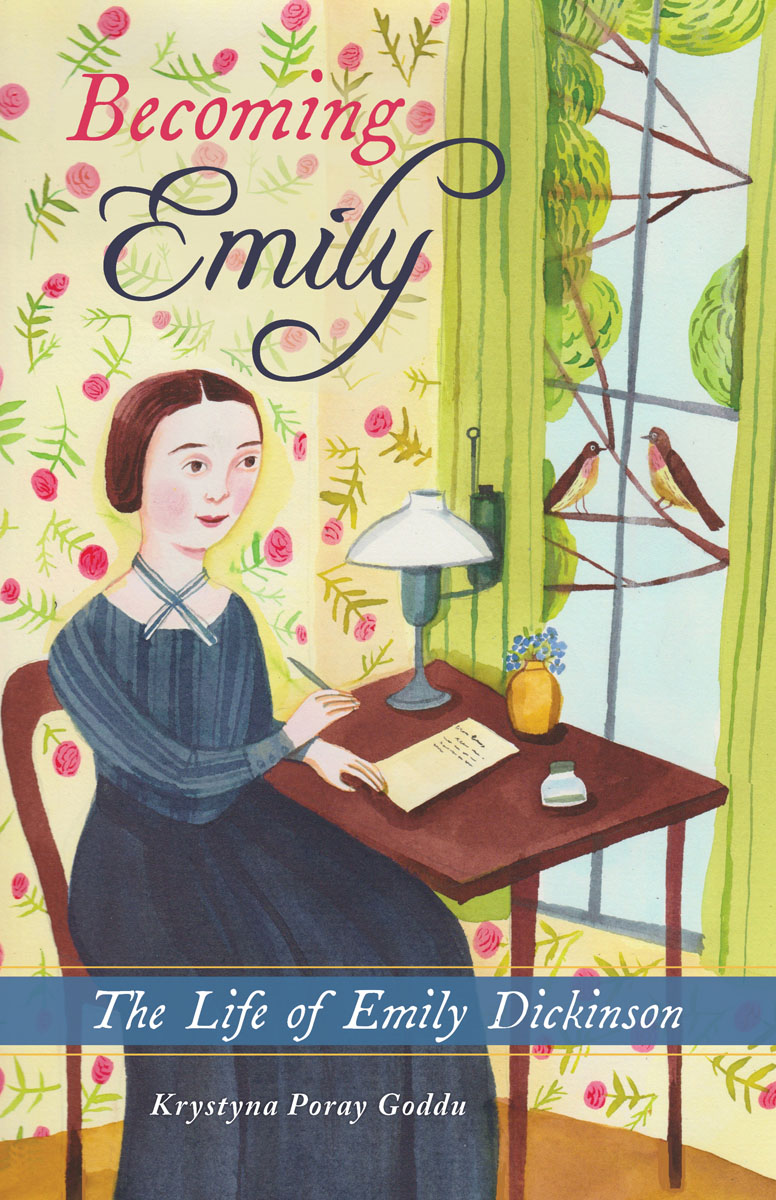from Becoming Emily:
B ut it was to her friend Jane that Emily confided something new and very important in her life. Even as she wrote of her conflicting religious feelings, she turned to another subject. She wrote with great excitement, but vaguely, as though she were afraid to express exactly what was happening. I have dared to do strange things, she began, bold things, and have asked no advice from anyI have heeded beautiful tempters, yet do not think I am wrong.
She longs to sit down with Jane and confess to an experience bitter, and sweet, but the sweet did so beguile meand life has had an aim, and the world has been too precious for your poorand striving sister! She wrote that things were budding, and springing, and singing. Jane could probably make no sense of what Emily was trying to tell her. But most scholars agree that Emily, at the age of 19, was trying to describe her first attempts at writing poetry.


Krystyna Poray Goddu is the author of A Girl Called Vincent and An Unlikely Ballerina and coauthor, with Krystyna Mihulka, of Krysia. She has contributed to American Girl magazine, Publishers Weekly, the New York Times Book Review, and the Riverbank Review of Books for Young Readers.
Jacket design: Lindsey Cleworth Schauer
Front cover illustration: Giselle Potter
Printed in the United States of America
Copyright 2019 by Krystyna Poray Goddu
All rights reserved
Published by Chicago Review Press Incorporated
814 North Franklin Street
Chicago, Illinois 60610
ISBN 978-0-89733-003-9
Library of Congress Cataloging-in-Publication Data
Names: Goddu, Krystyna Poray, author.
Title: Becoming Emily : the life of Emily Dickinson / Krystyna Poray Goddu. Description: Chicago, Illinois : Chicago Review Press Incorporated, [2019] | Includes bibliographical references and index.
Identifiers: LCCN 2018024637 (print) | LCCN 2018033675 (ebook) | ISBN 9780914091004 (adobe pdf) | ISBN 9780914091196 (epub) | ISBN 9780914091127 (kindle) | ISBN 9780897330039 | ISBN 9780897330039 (cloth)
Subjects: LCSH: Dickinson, Emily, 18301886. | Women poets, American19th centuryBiography.
Classification: LCC PS1541.Z5 (ebook) | LCC PS1541.Z5 G63 2019 (print) | DDC 811/.4dc23
LC record available at https://lccn.loc.gov/2018024637
Interior design: Sarah Olson
Excerpts from Emily Dickinsons poems and letters from the following volumes are used by permission of Harvard University Press:
The Poems of Emily Dickinson: Reading Edition, edited by Ralph W. Franklin, Cambridge, MA: Belknap Press of Harvard University Press, Copyright 1998, 1999 by the President and Fellows of Harvard College. Copyright 1951, 1955 by the President and Fellows of Harvard College. Copyright renewed 1979, 1983 by the President and Fellows of Harvard College. Copyright 1914, 1918, 1919, 1924, 1929, 1930, 1932, 1935, 1937, 1942 by Martha Dickinson Bianchi. Copyright 1952, 1957, 1958, 1963, 1965 by Mary L. Hampson.
The Letters of Emily Dickinson, edited by Thomas H. Johnson, Associate Editor, Theodora Ward, Cambridge, MA: Belknap Press of Harvard University Press, Copyright 1958 by the President and Fellows of Harvard College. Copyright renewed 1986 by the President and Fellows of Harvard College. Copyright 1914, 1924, 1932, 1942 by Martha Dickinson Bianchi. Copyright 1952 by Alfred Leete Hampson. Copyright 1960 by Mary L. Hampson.
Printed in the United States of America
5 4 3 2 1

This book is dedicated to the memory of Leslie Maria Farrell Layman (19872017)
Much loved, much missed

C ONTENTS


A UTHOR S N OTE

In writing about Emily Dickinson, I have often chosen to let the poet speak for herself. This book is filled with quotations from her writings. Author of nearly 1,800 poems and more than 1,000 letters (many of which read like poems themselves), Emily had her own distinctive style. She did not adhere to traditional spelling or punctuation rules. She also wrote different drafts of many of her poems, often changing words and punctuation. She was not interested in publication and so only about 10 poems were published during her lifetime, all of them anonymously and all but one without her permission.
After her death, those who edited and published her handwritten work in print form had to make difficult decisions about which draft of a poem would have been Emilys final choice. They also had to decide whether to keep or change her often-unusual spelling and punctuation. As a result, Emilys work has been published with many variations.
In this book I have used the versions of her poems and letters as presented in the two most widely respected collections. Her poems have been copied from The Poems of Emily Dickinson: Reading Edition, edited by R. W. Franklin and first published by the Belknap Press of Harvard University Press in 1998. For her letters, I have relied on the three-volume edition of The Letters of Emily Dickinson edited by Thomas H. Johnson with associate editor Theodora Ward and first published by the Belknap Press in 1958. In writing about the Master letters, I have used the reordering done by R. W. Franklin in The Master Letters, published by Amherst College Press in 1986. (I am grateful to Dickinson scholar Marta Werner for pointing me to Franklins 1986 work.)
Id also like to note the usage of first names for most of the figures in Emilys life. In Emilys time, peopleeven close friends, sometimesaddressed each other very formally. Many of the important people in Emilys life, such as Thomas Wentworth Higginson, Samuel Bowles, and Otis Phillips Lord, were older men. In spite of feeling very close to them, she never used their first names when writing to them. Often her letters simply begin: Dear friend. After much thought, I decided to use first names for all the major figures in this book, regardless of how Emily might have addressed them. I hope that the use of first names will help convey the closeness Emily felt to these dear friends, who were so deeply intertwined in her heart and mind.
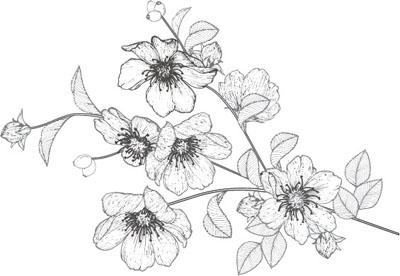
E ARLY C HILDHOOD AT THE H OMESTEAD
I magine a young woman, small like a wren, with chestnut-colored hair and matching eyes, strolling through a garden ablaze with colorful flowers: yellow heliotrope, pink and purple sweet peas, red cinnamon roses, and white jasmine. These are her children; she lovingly tends to them, year after year. A bobolink sings overhead. Soon she may wander with her big brown dog, Carlo, into the nearby woods, where her favorite wildflowers grow: violets, anemones, pink and yellow ladys slippers, and Indian pipes. She is whispering what sounds like a prayer, but is a poem:


